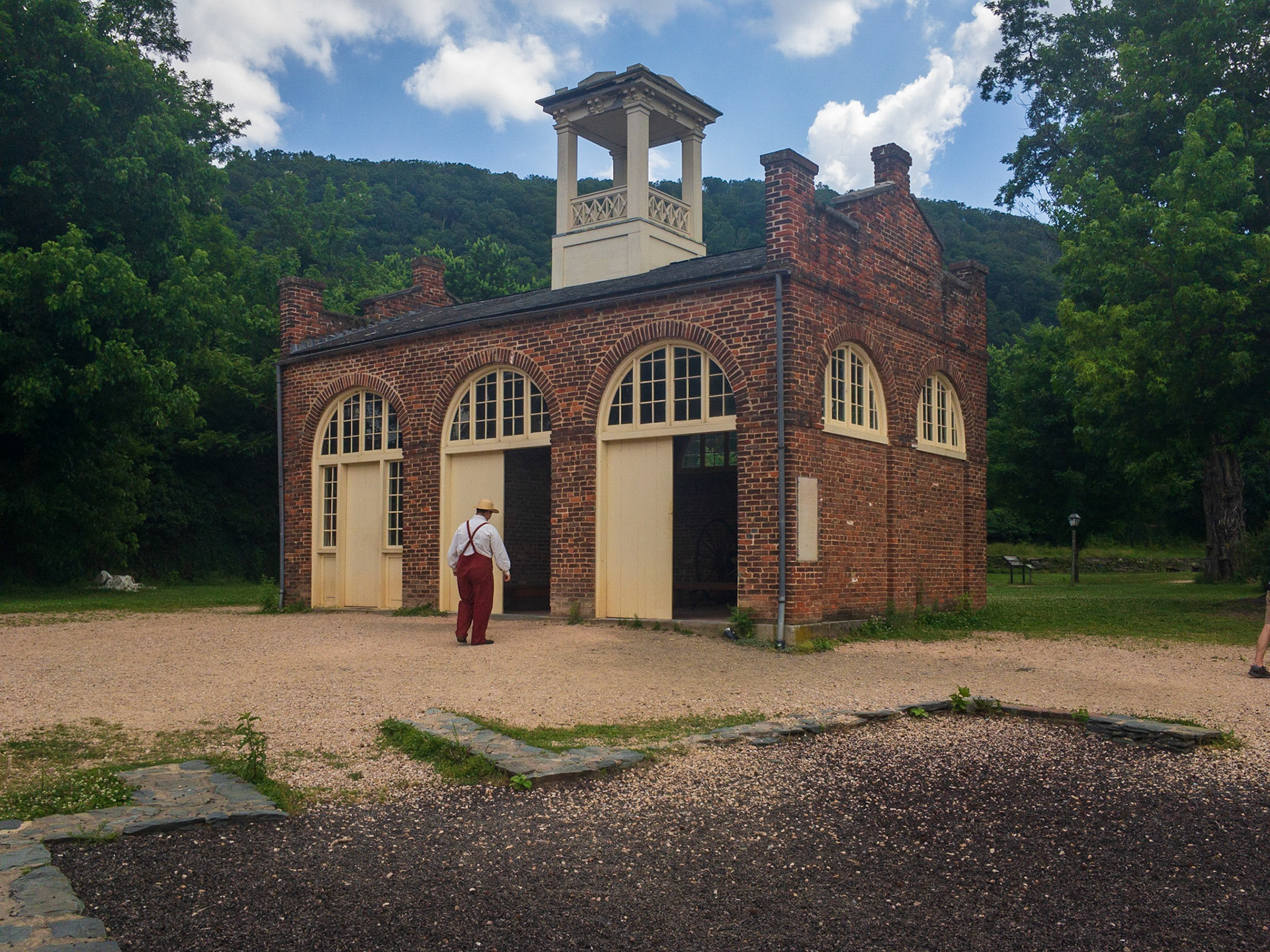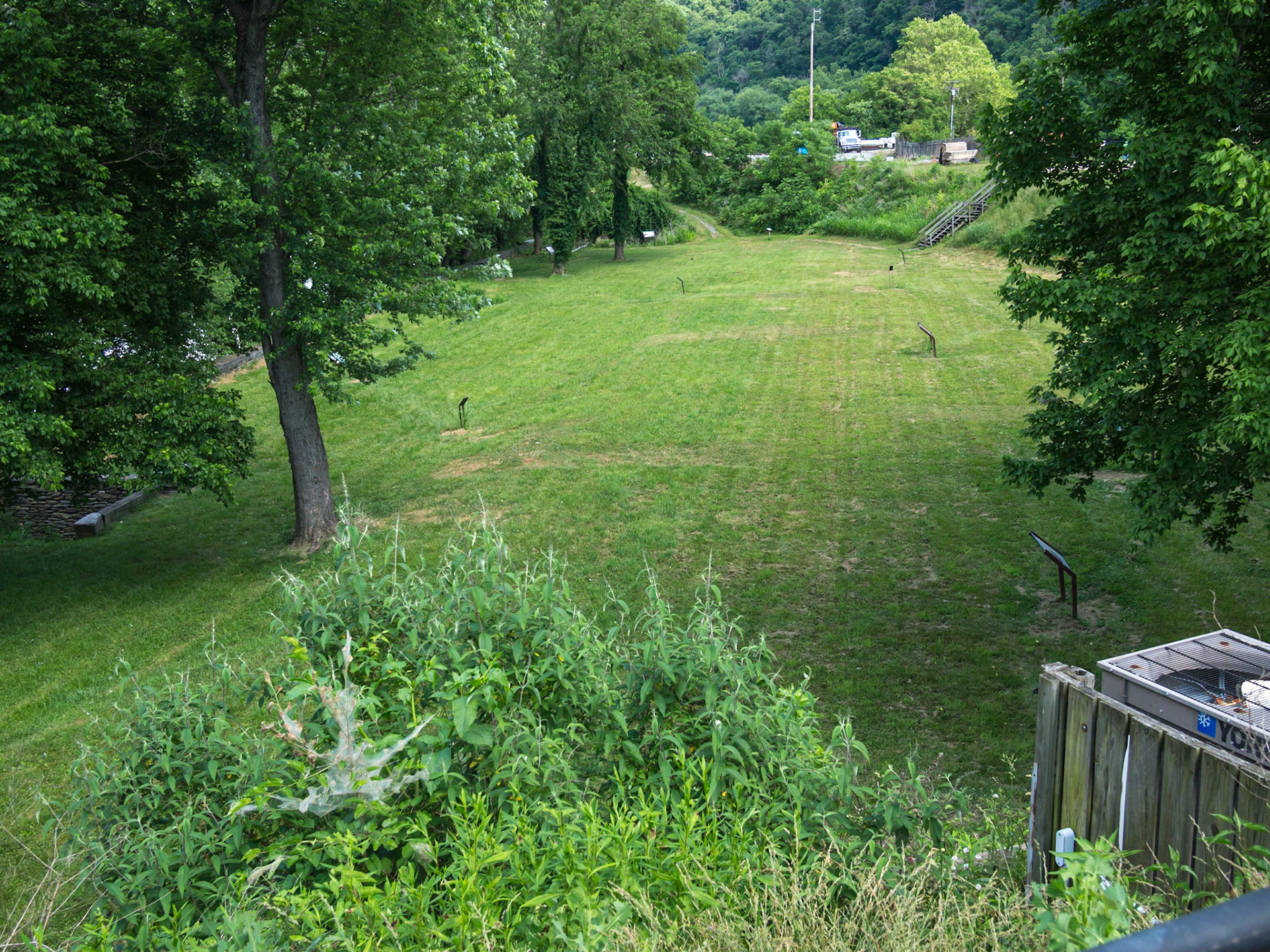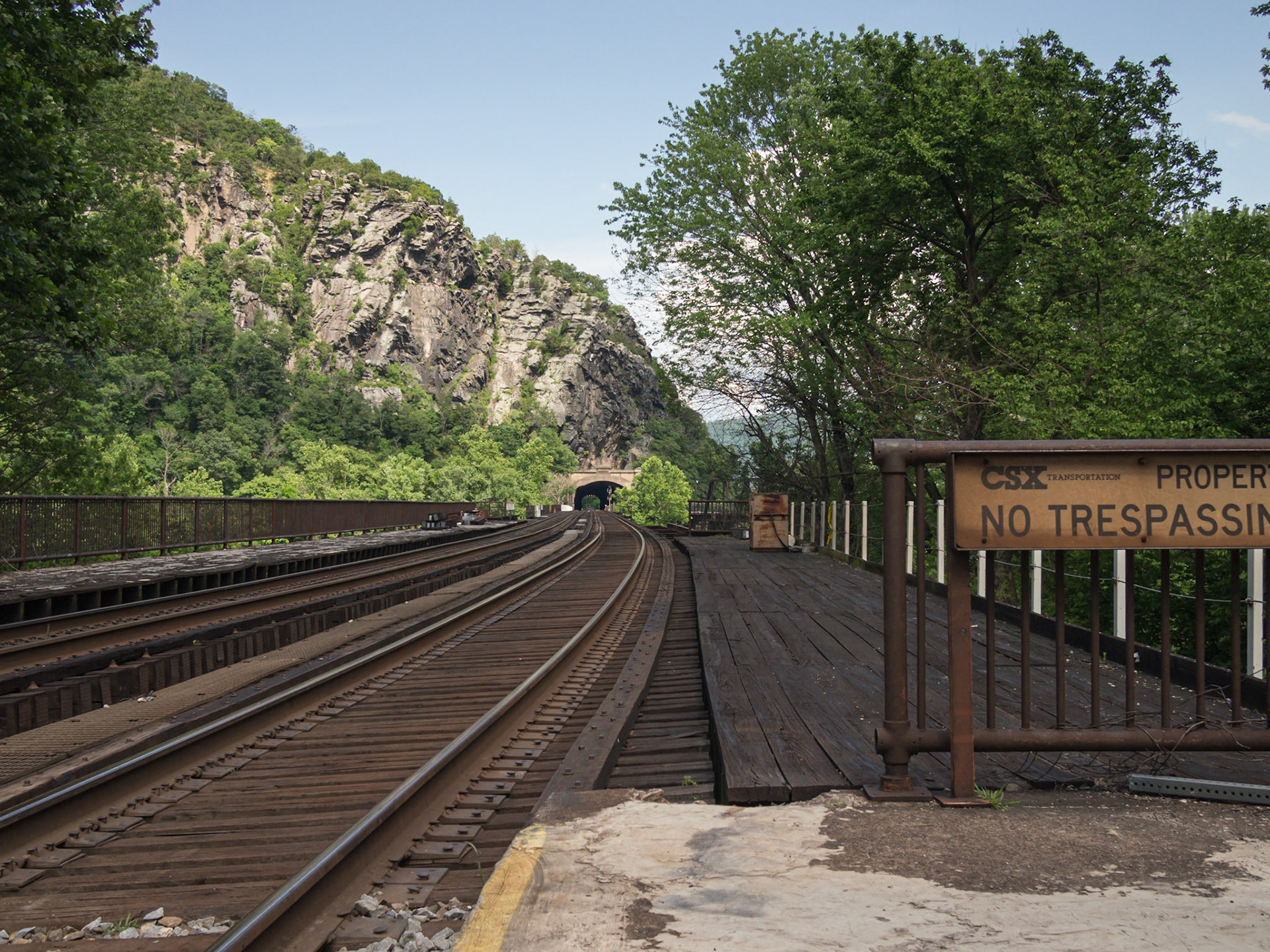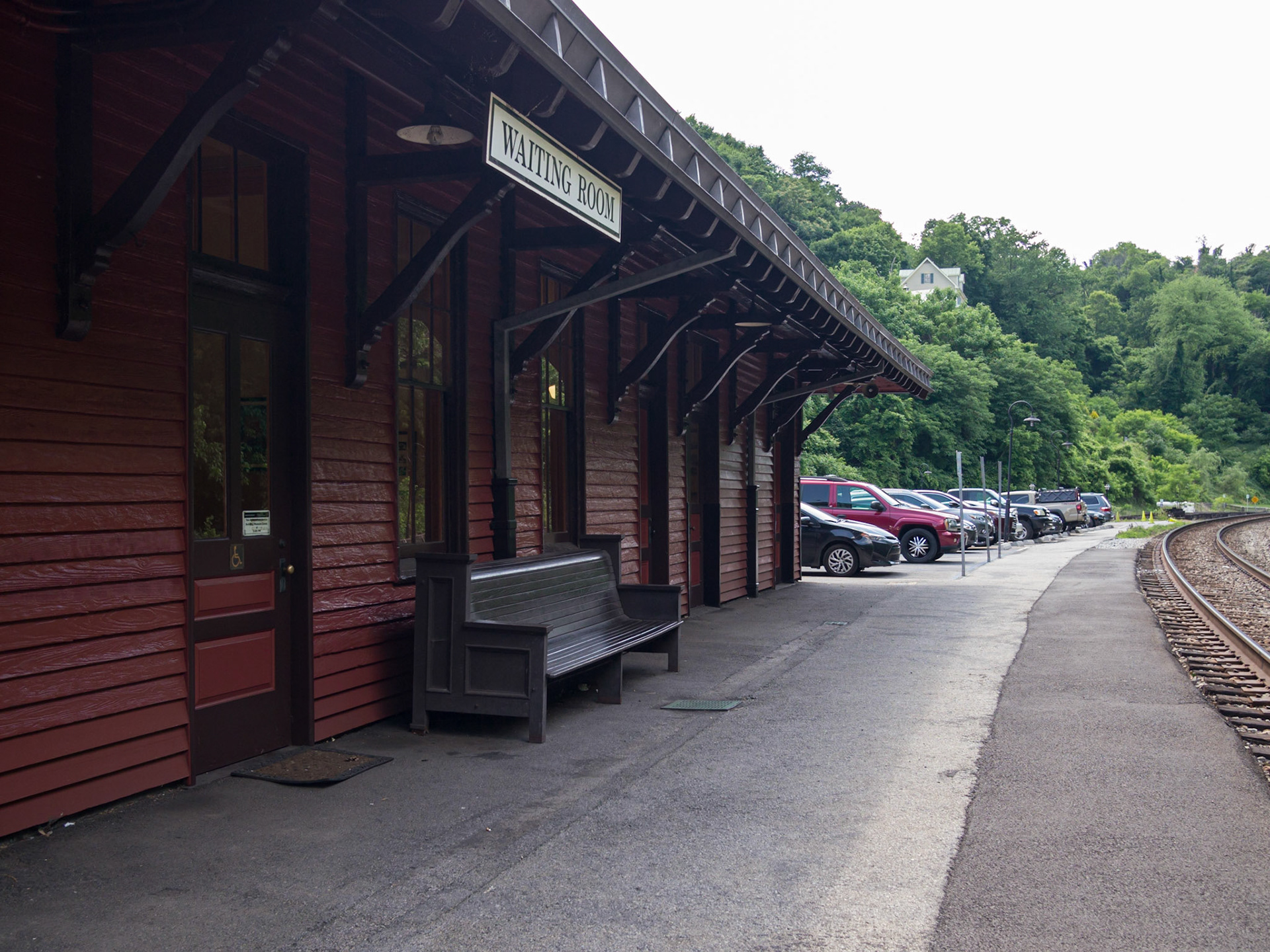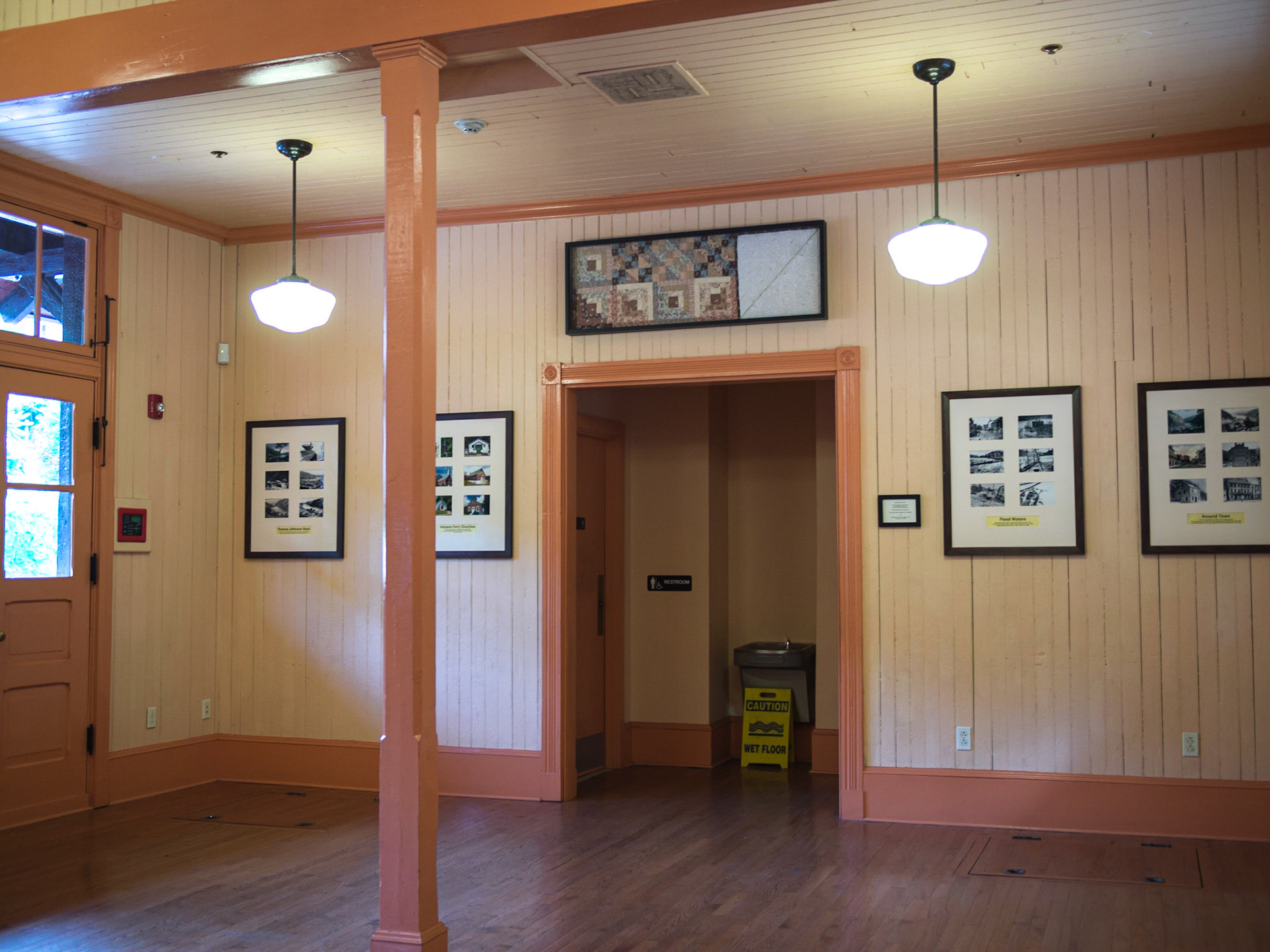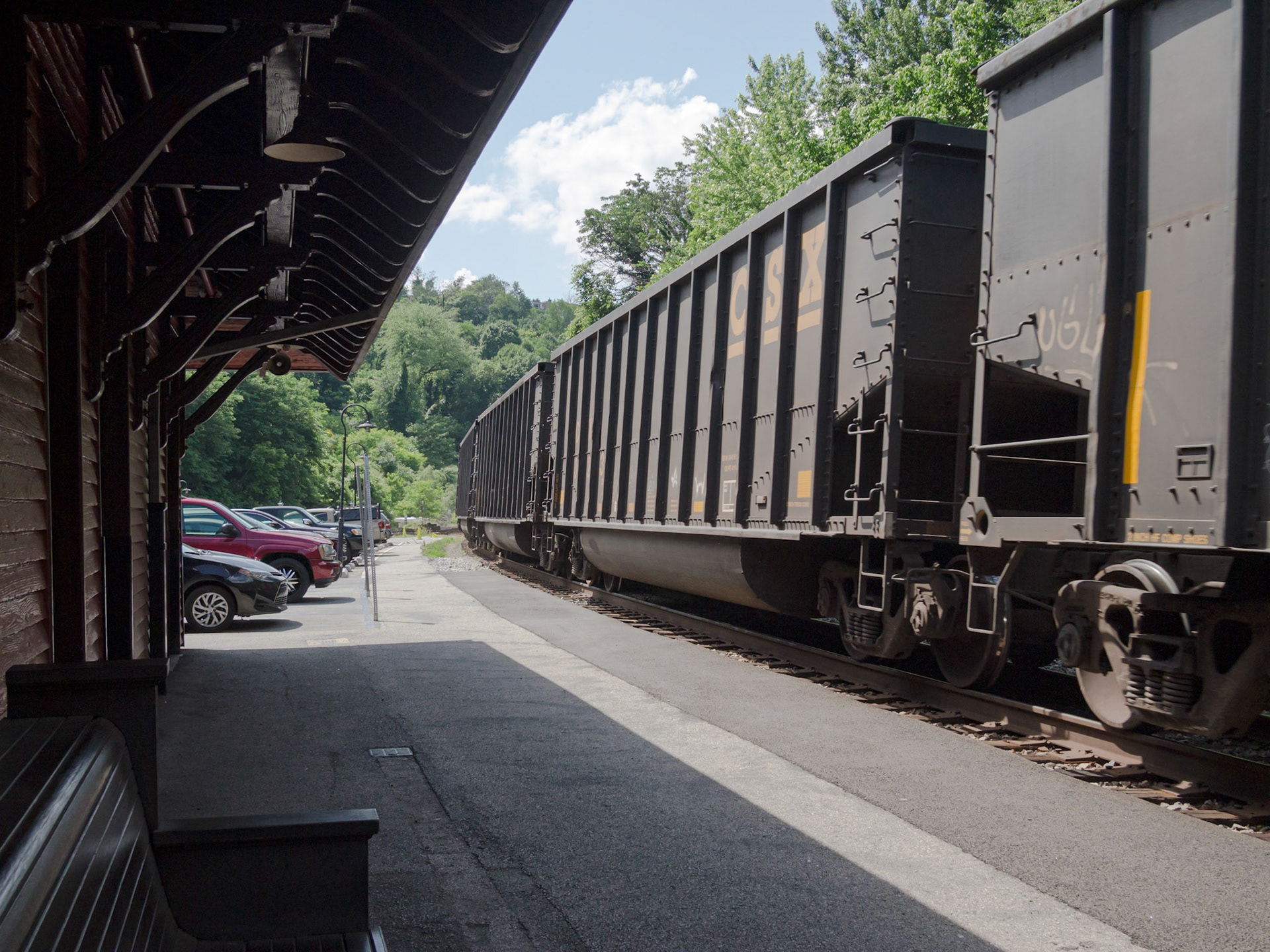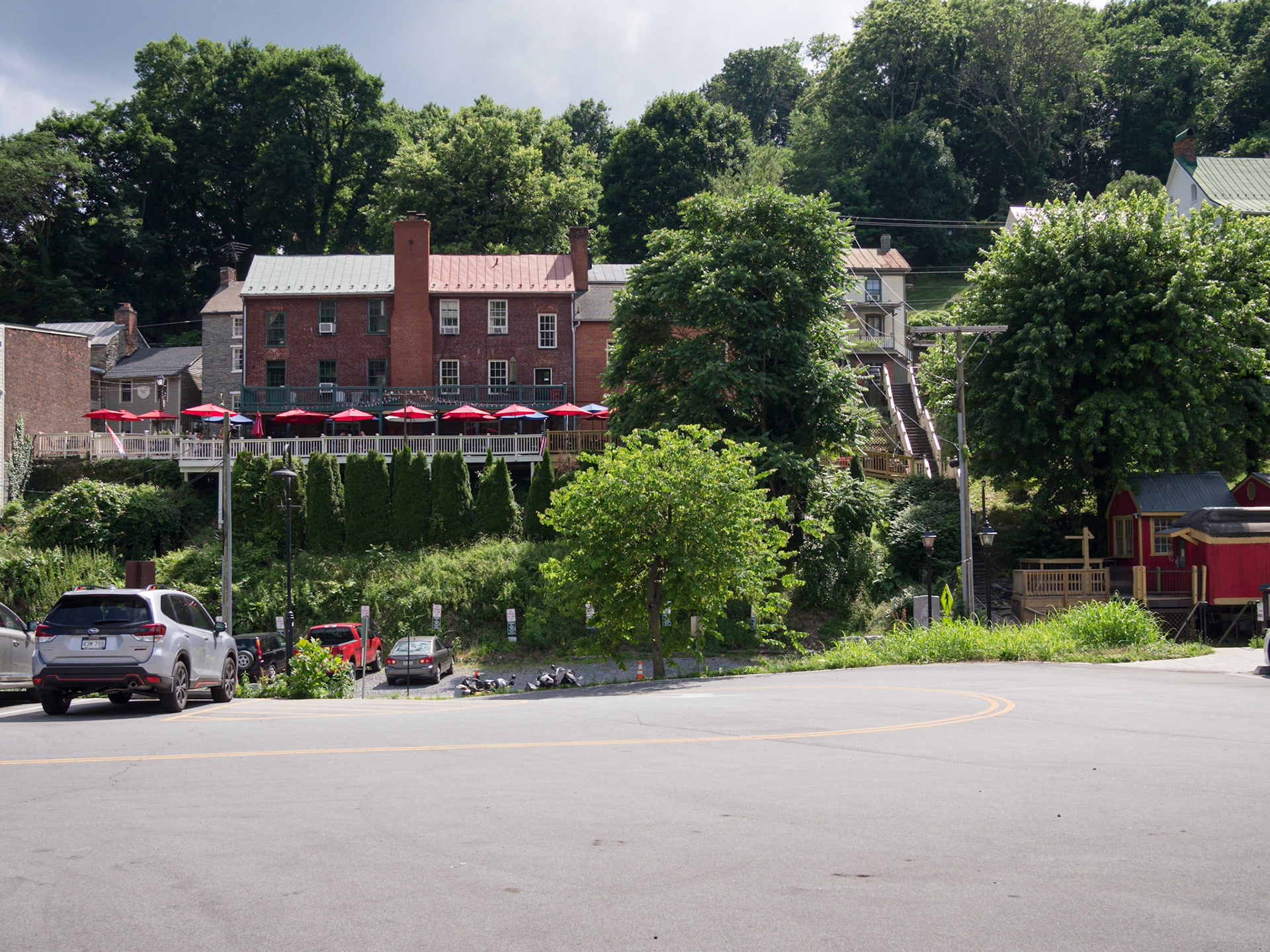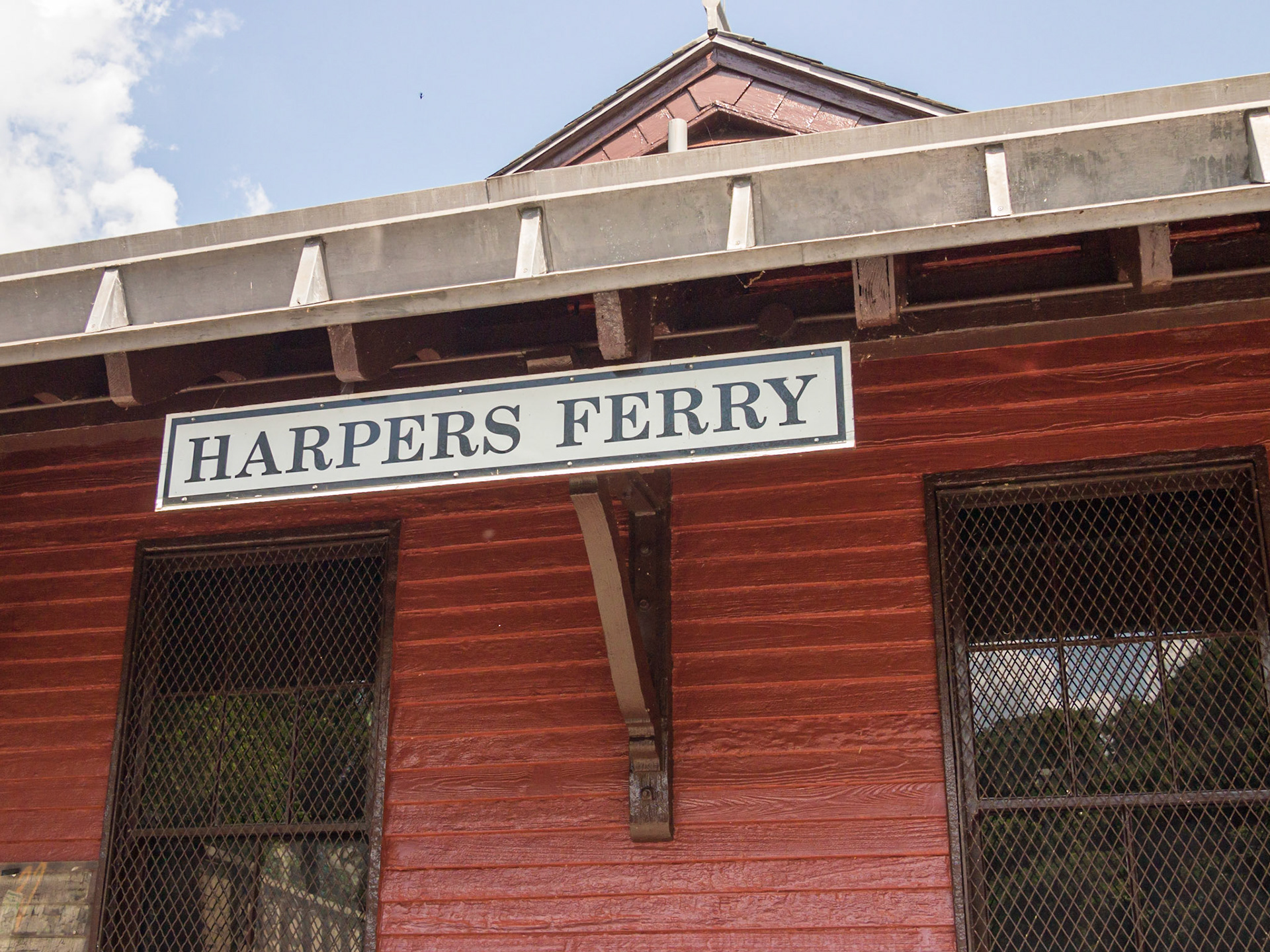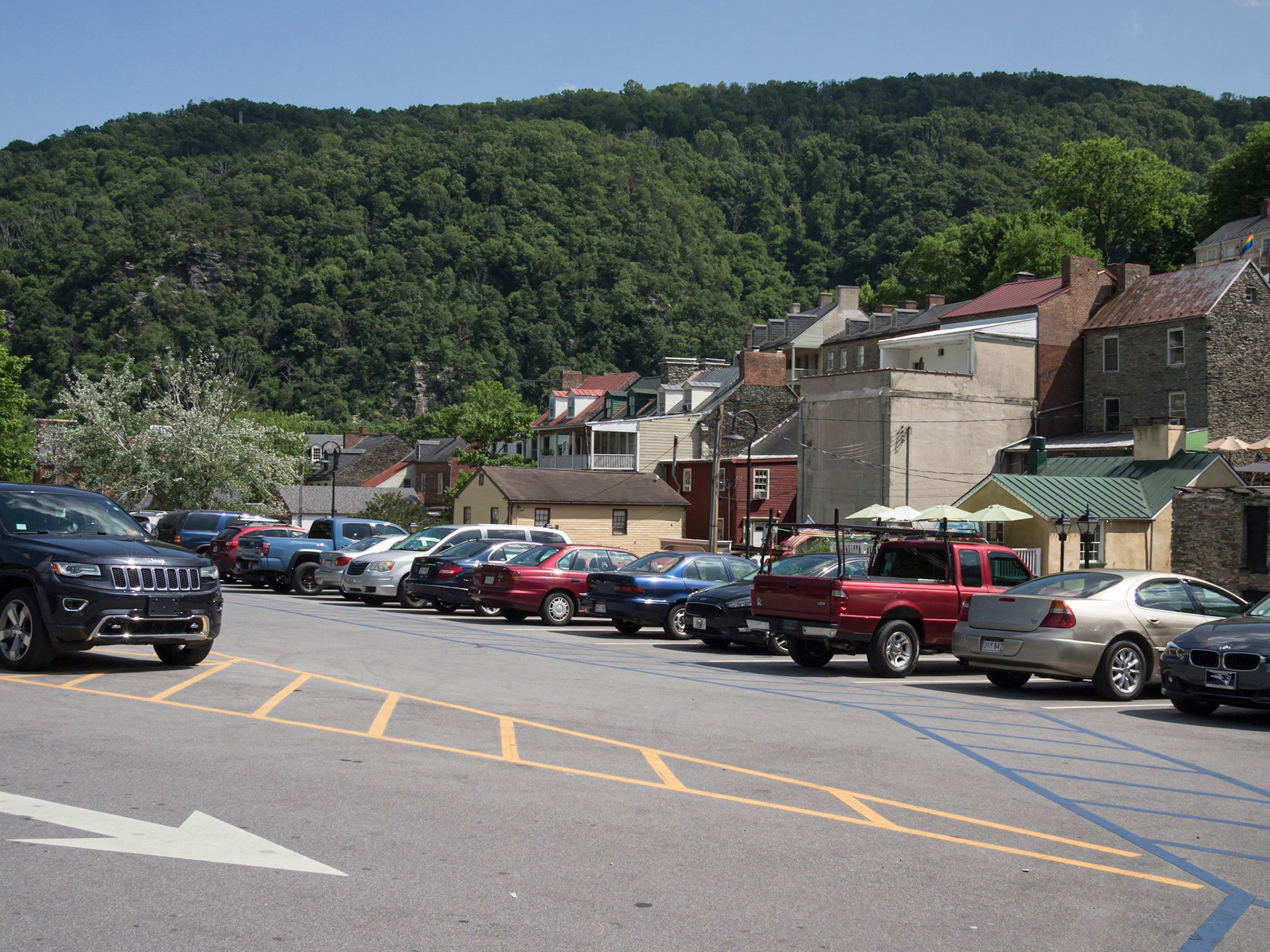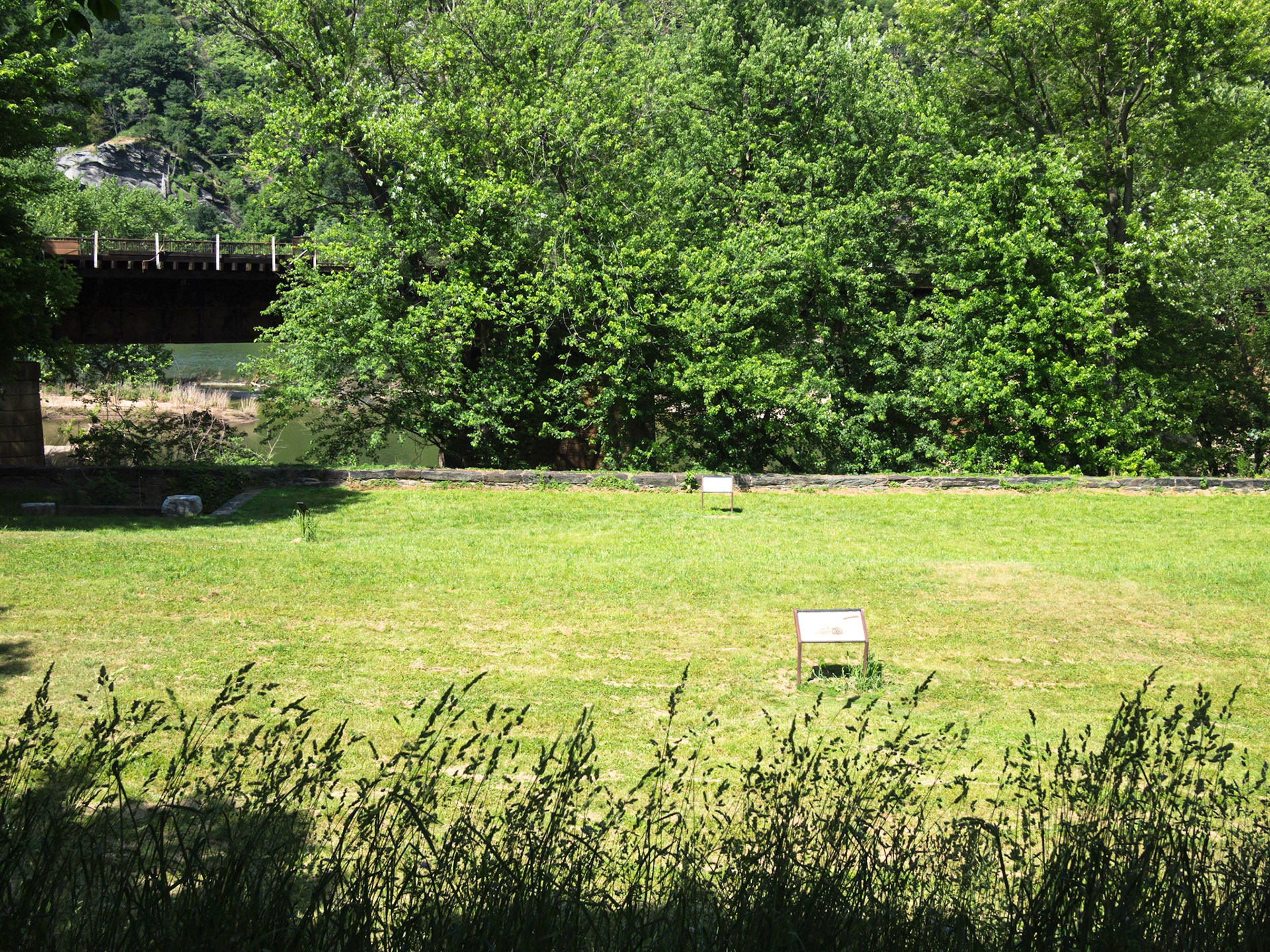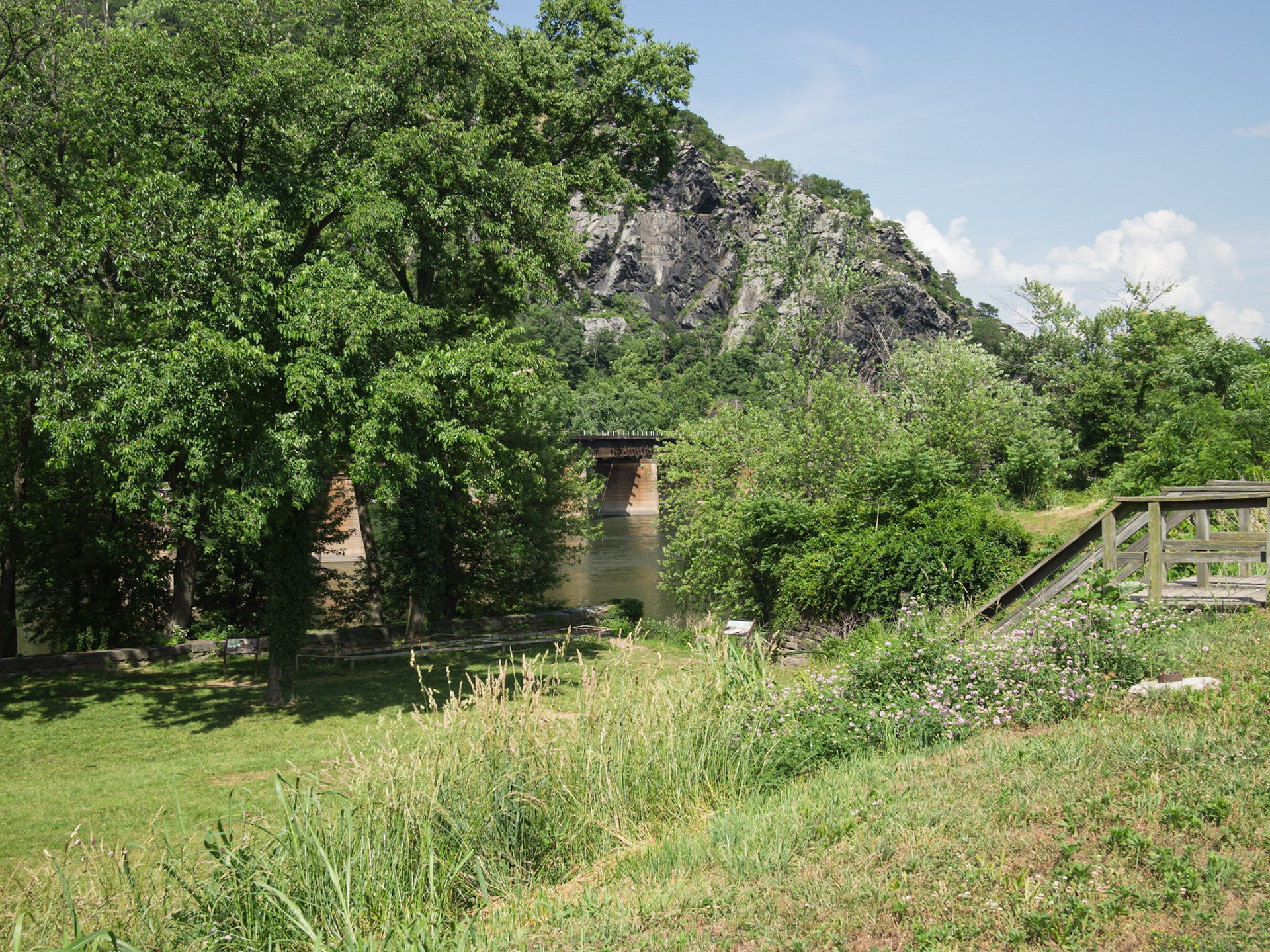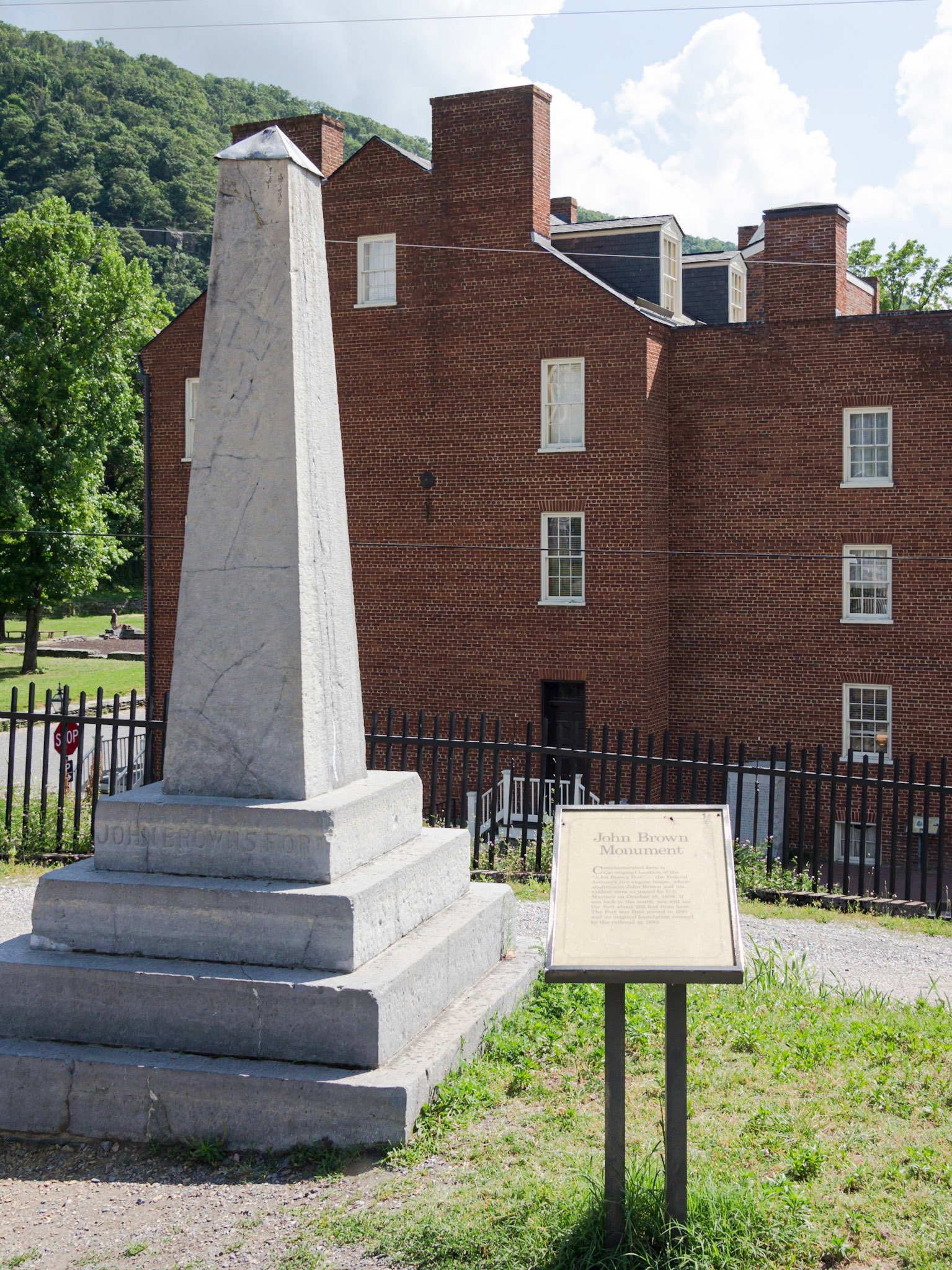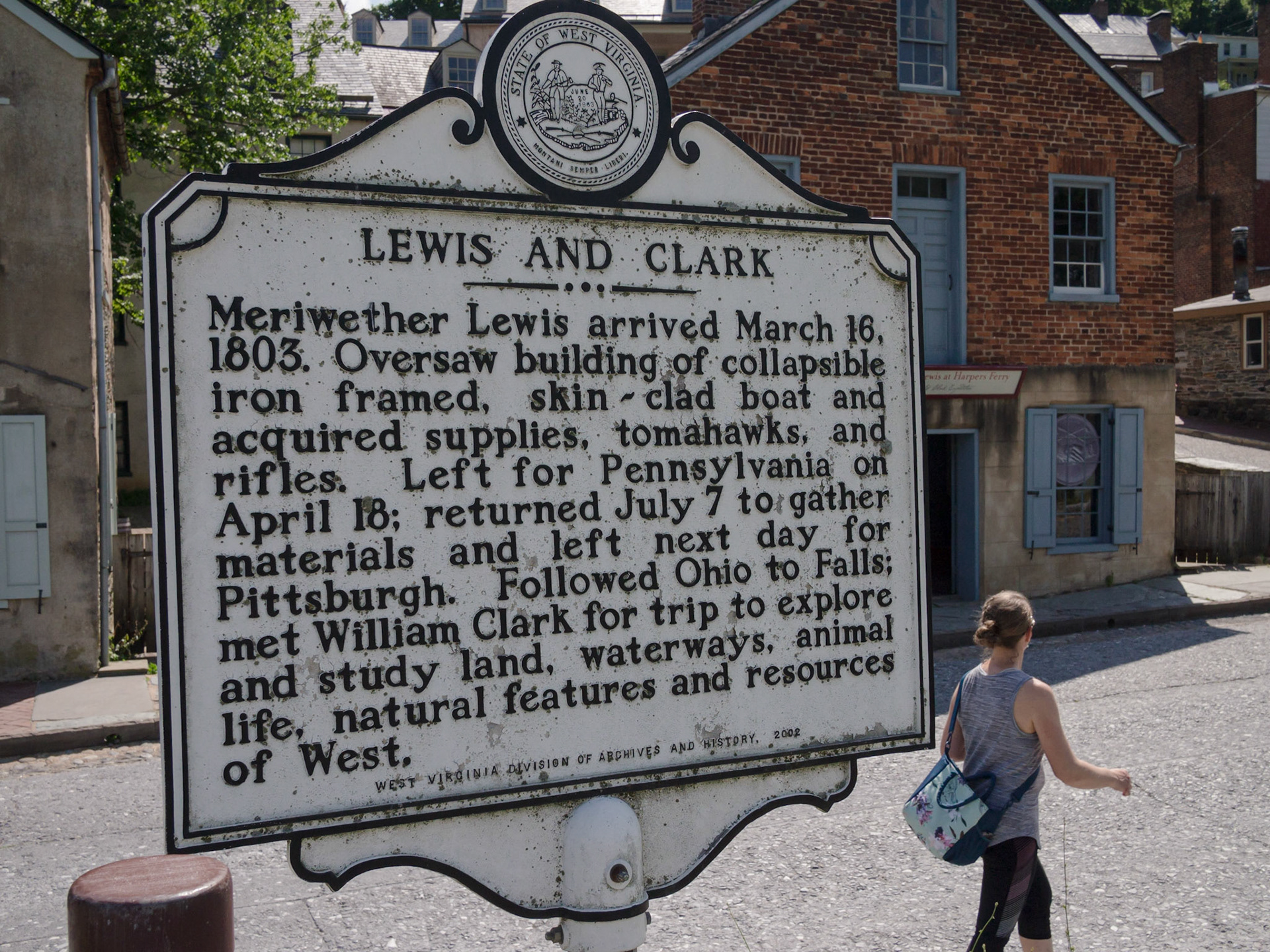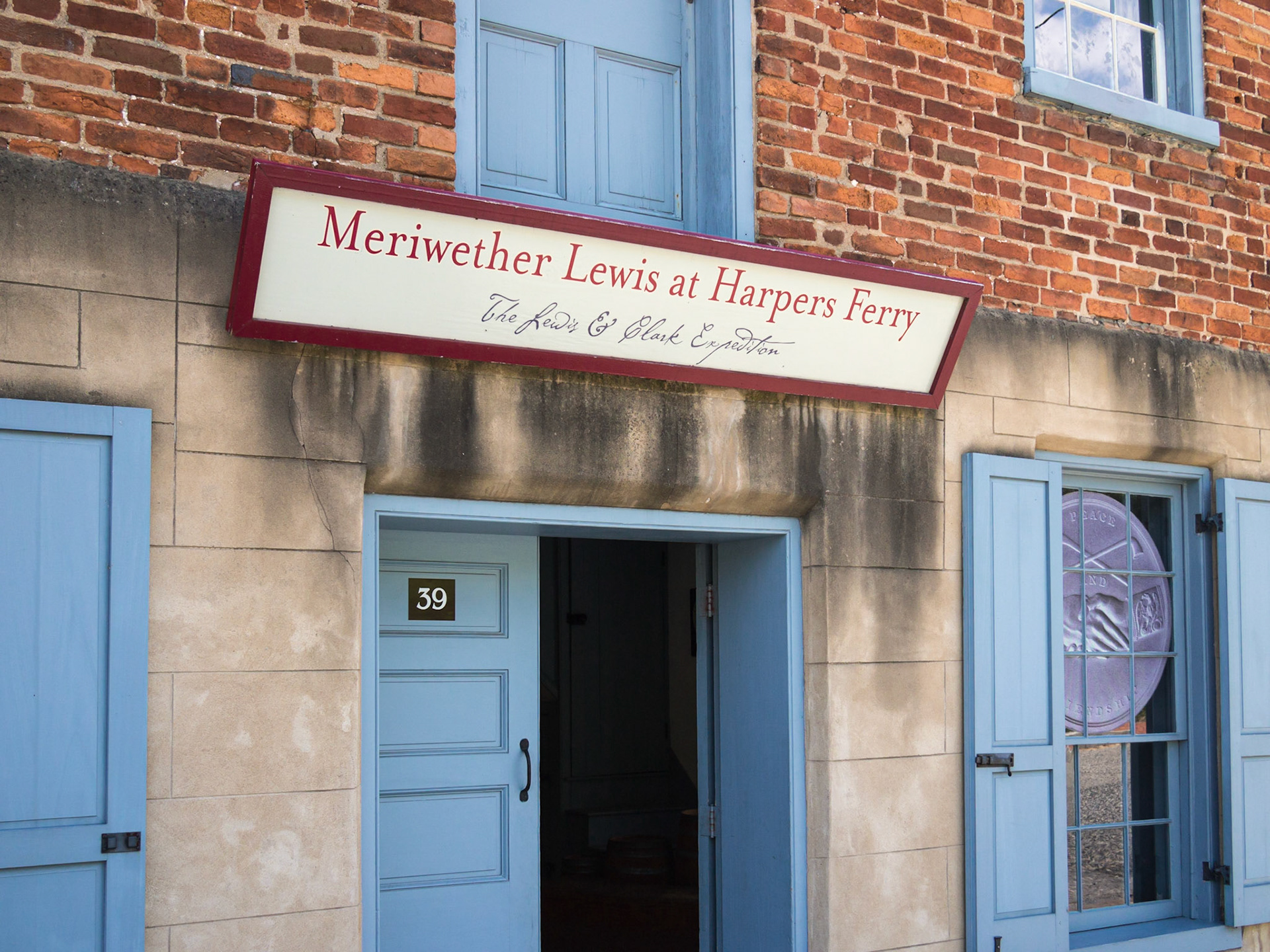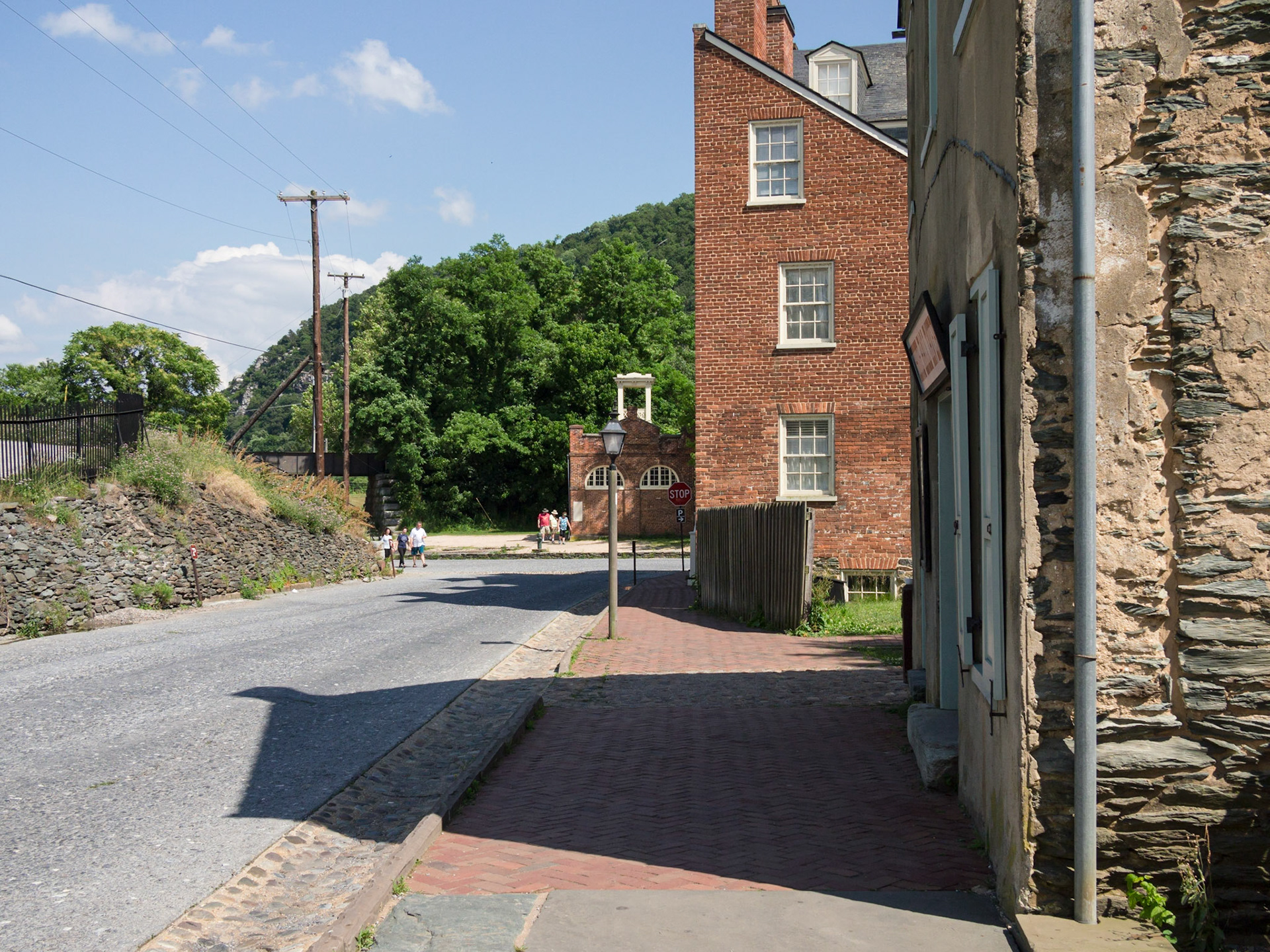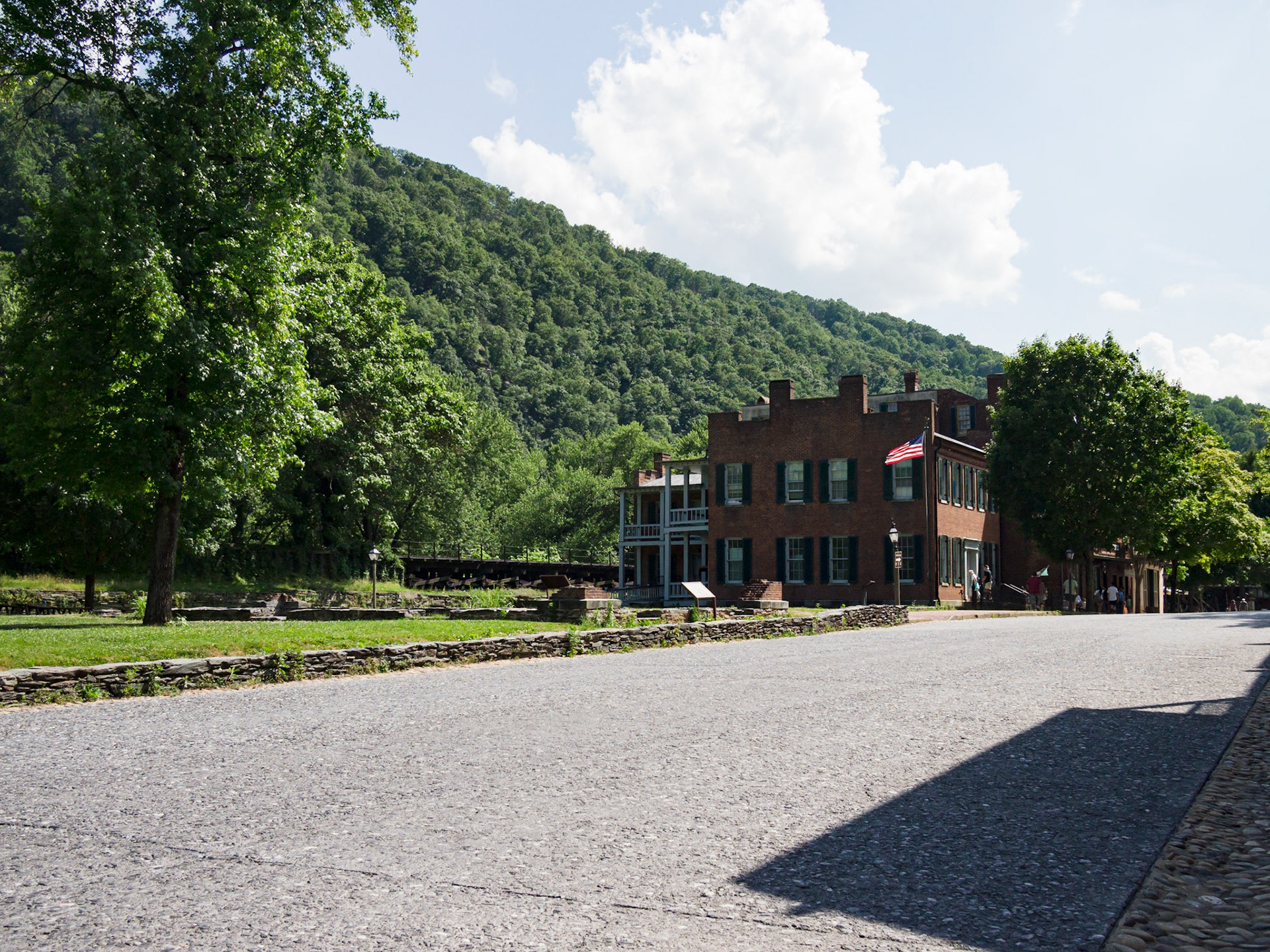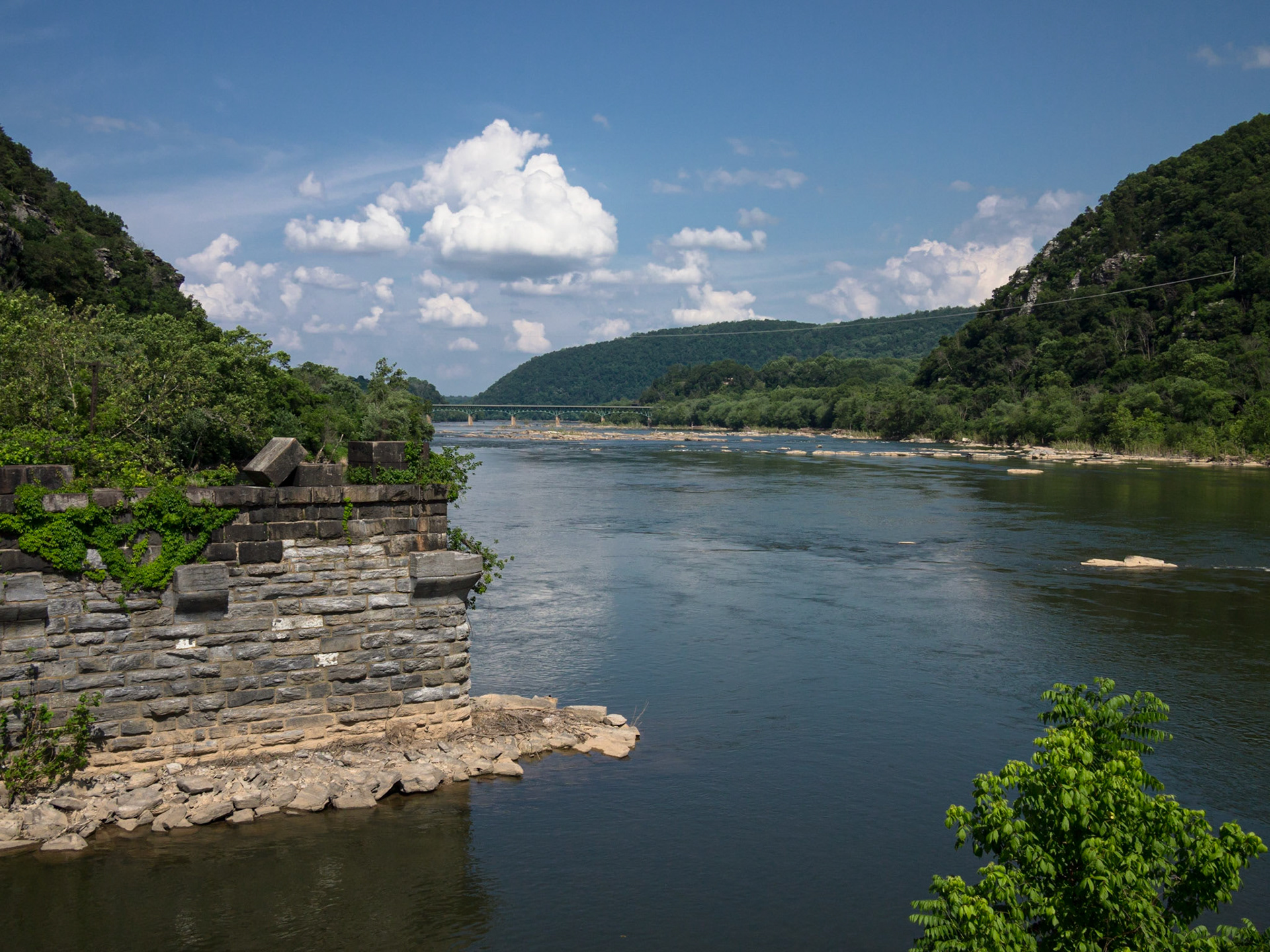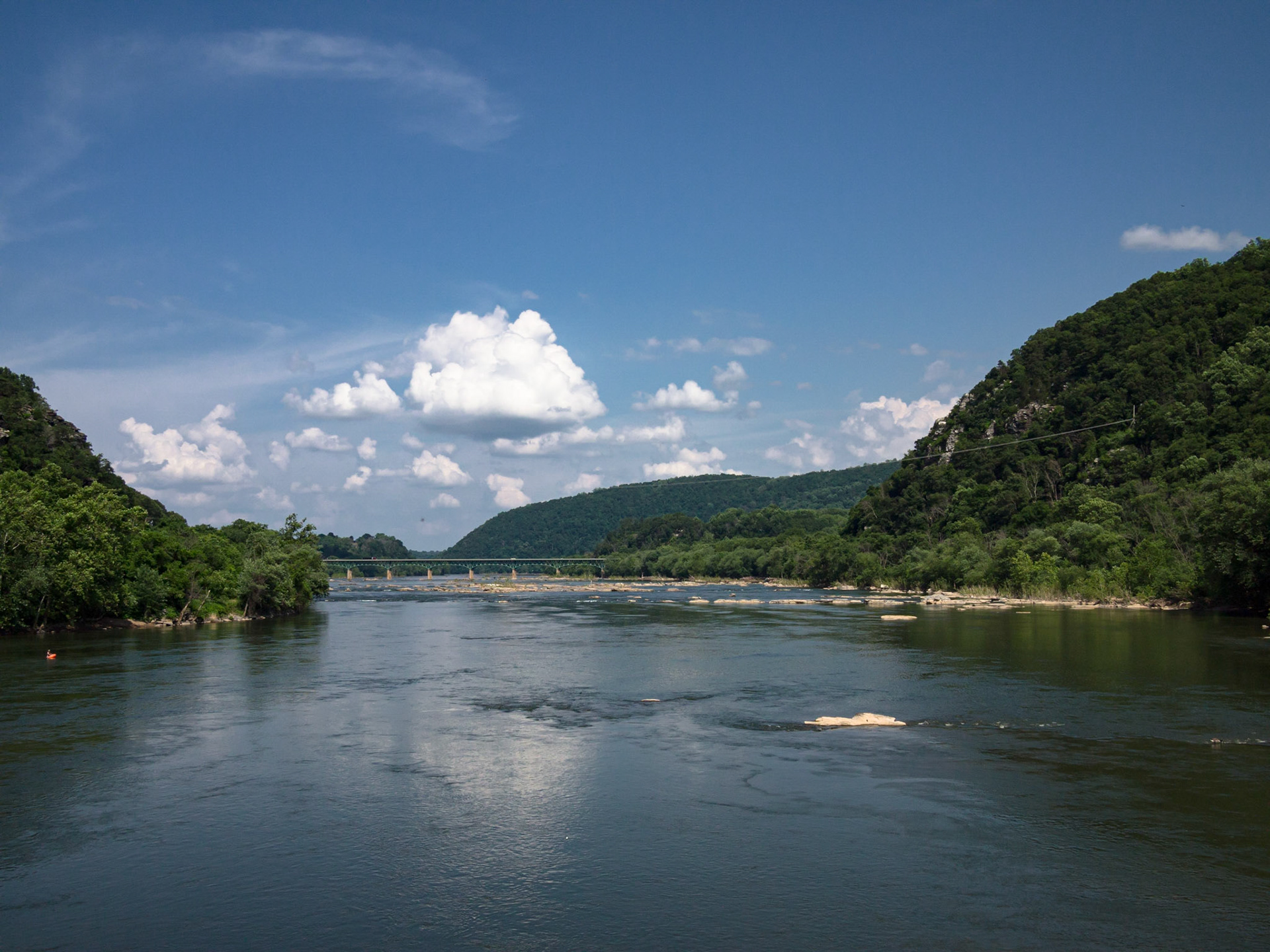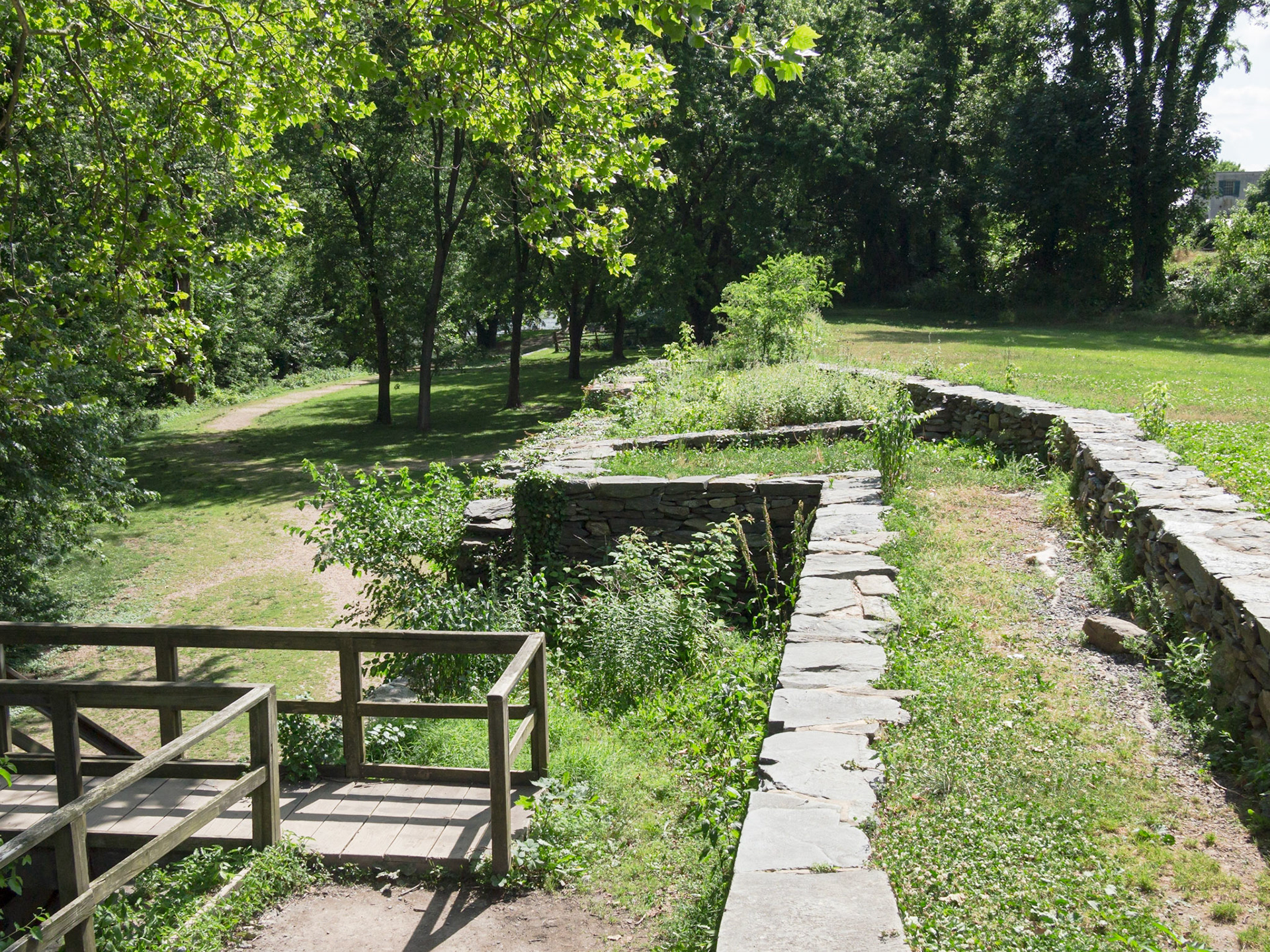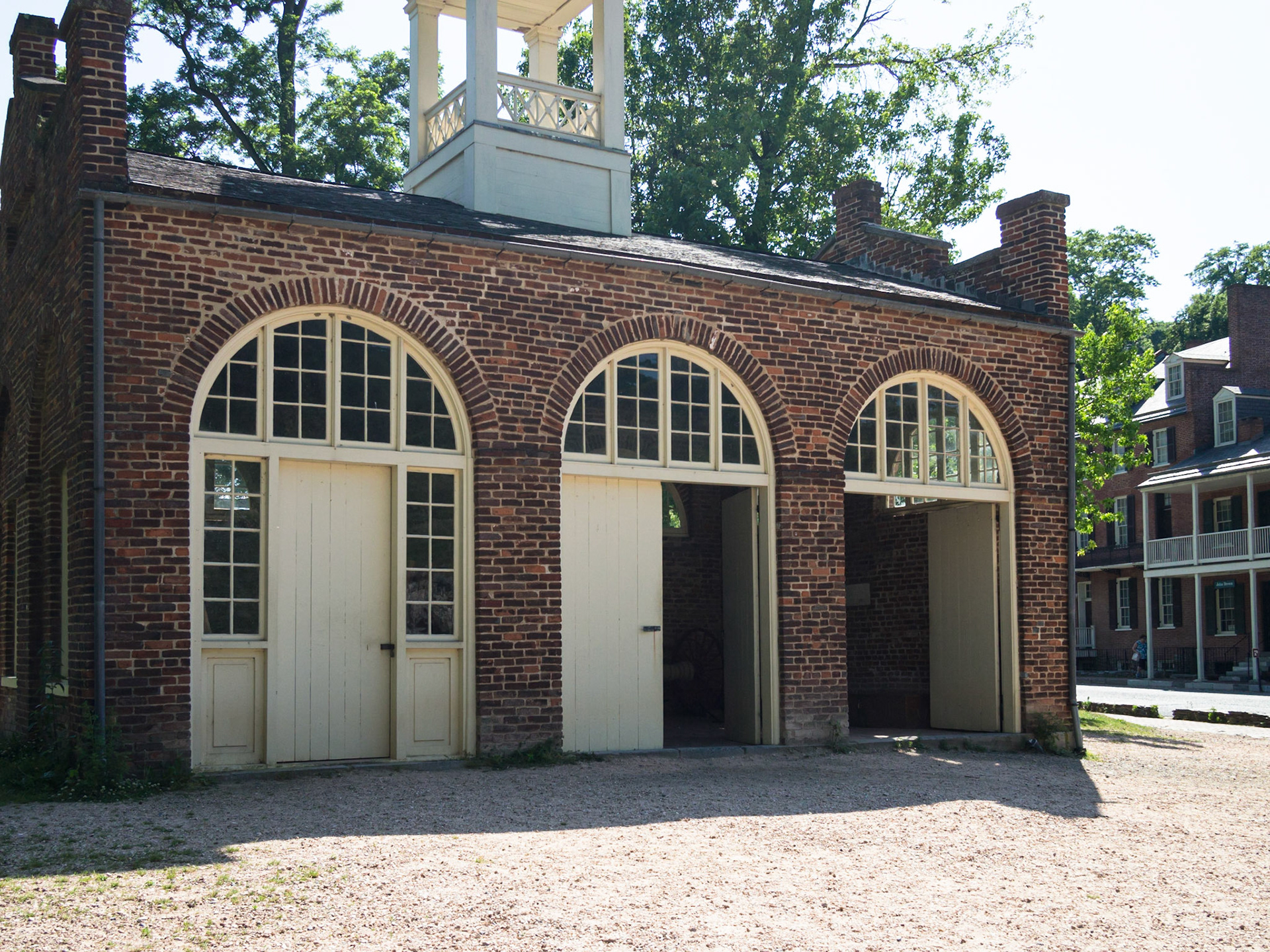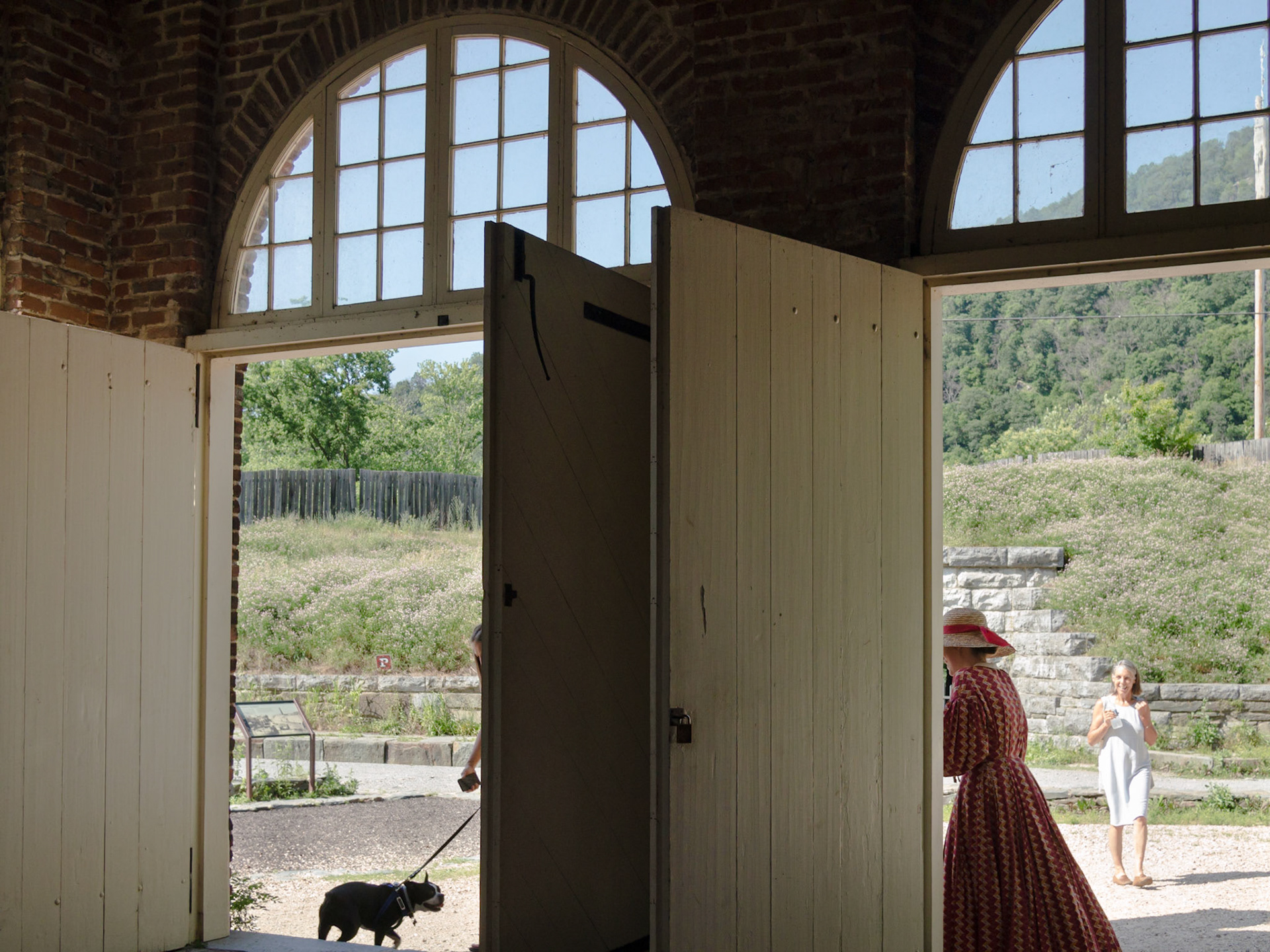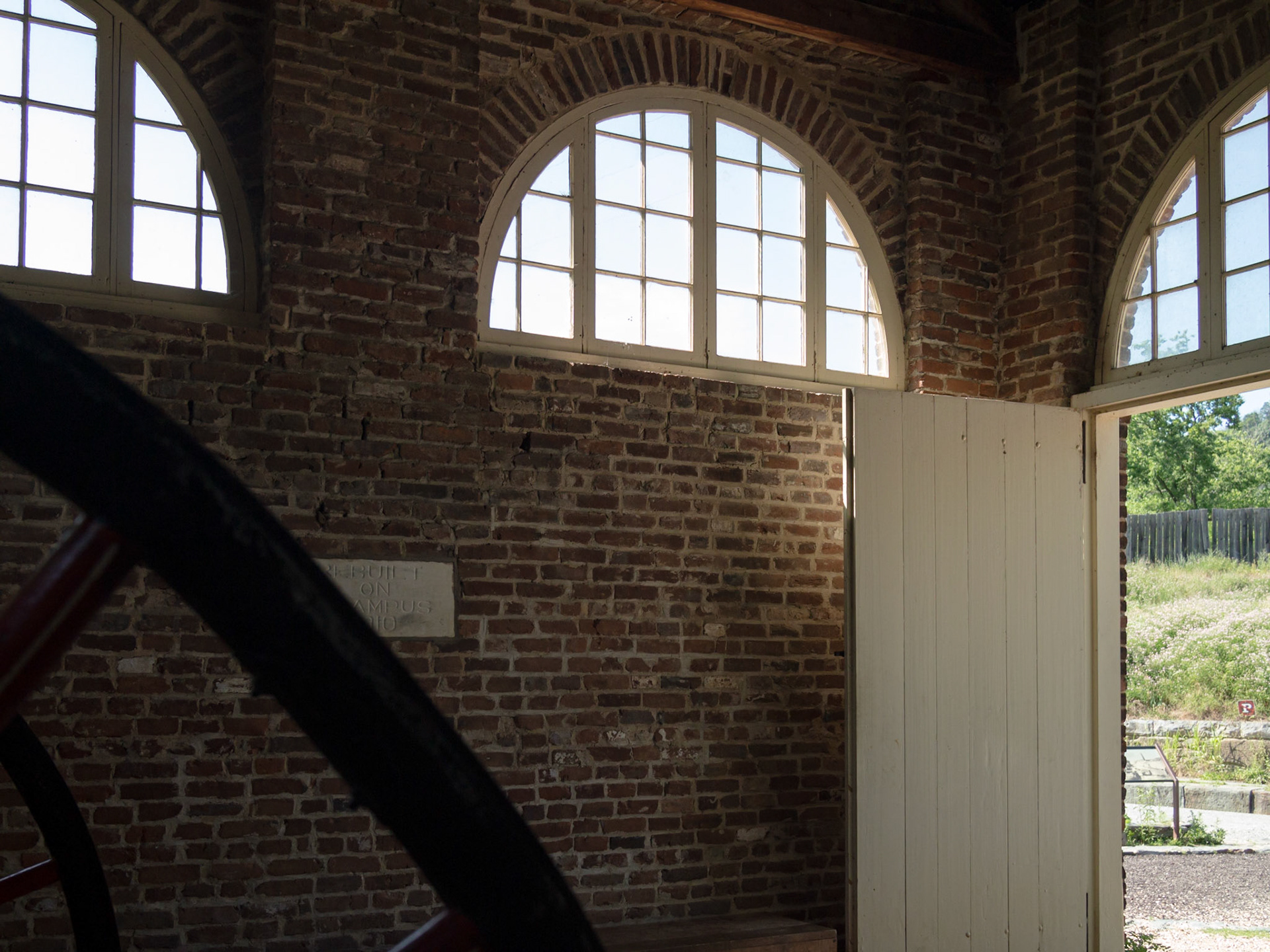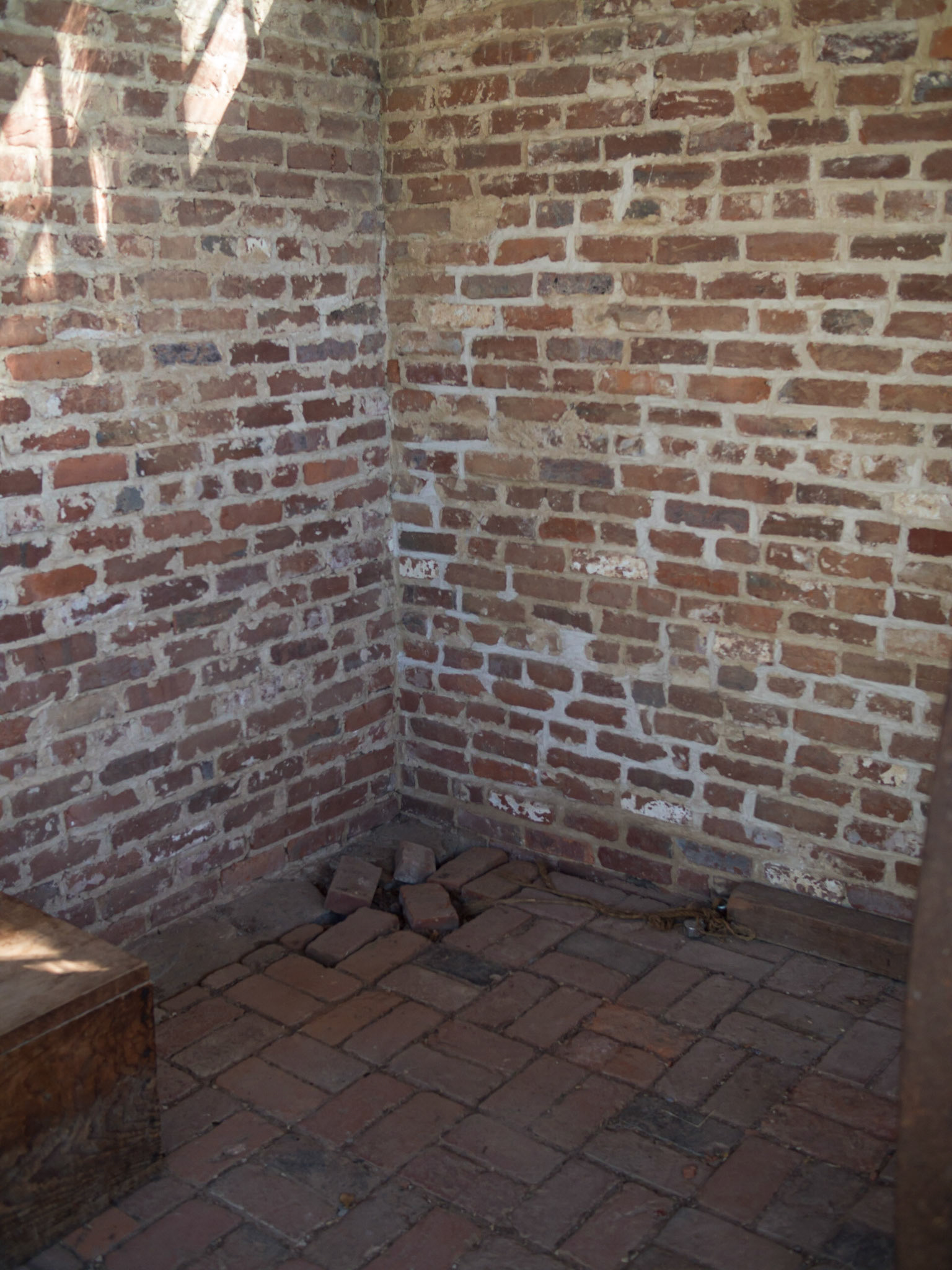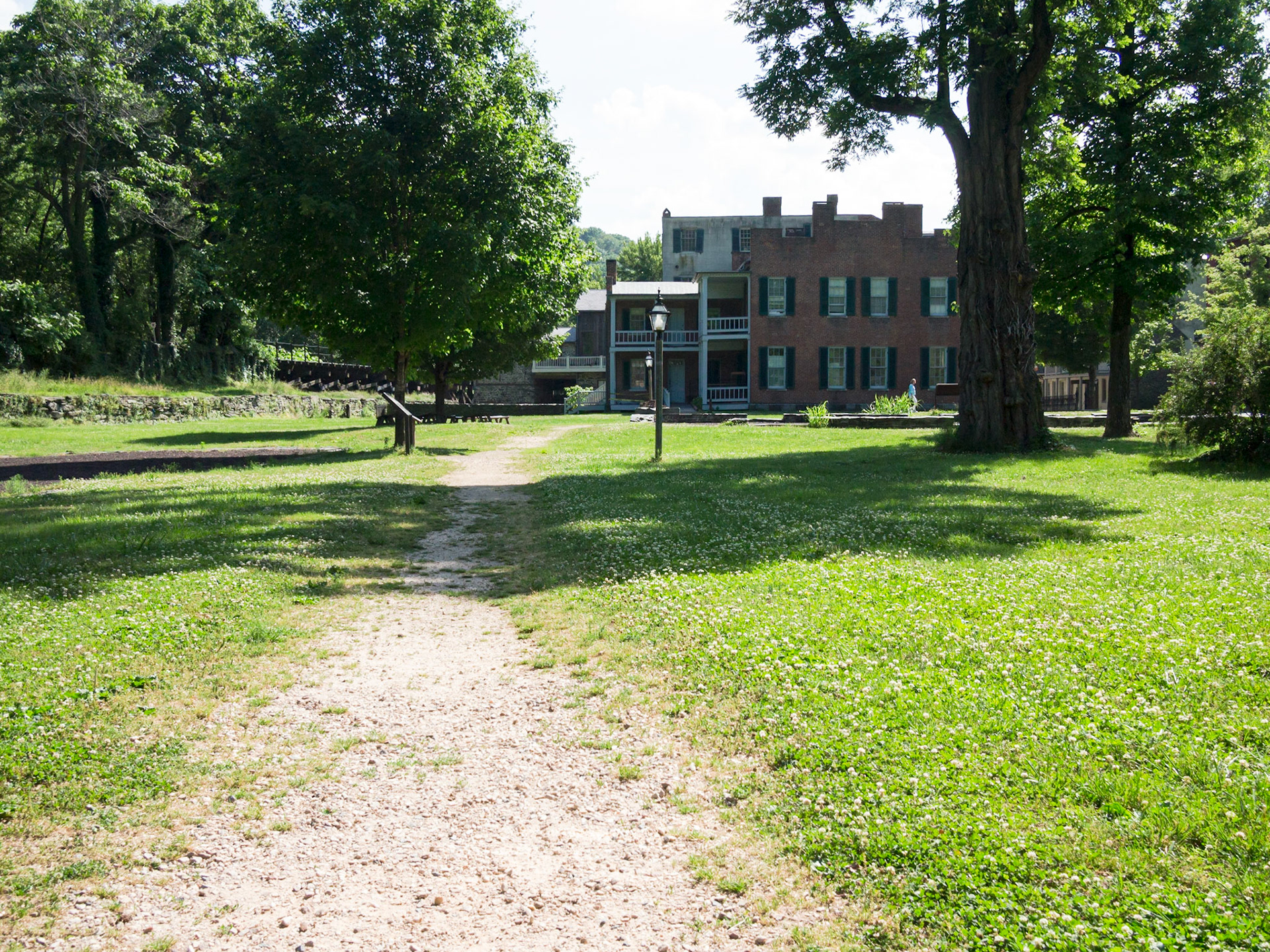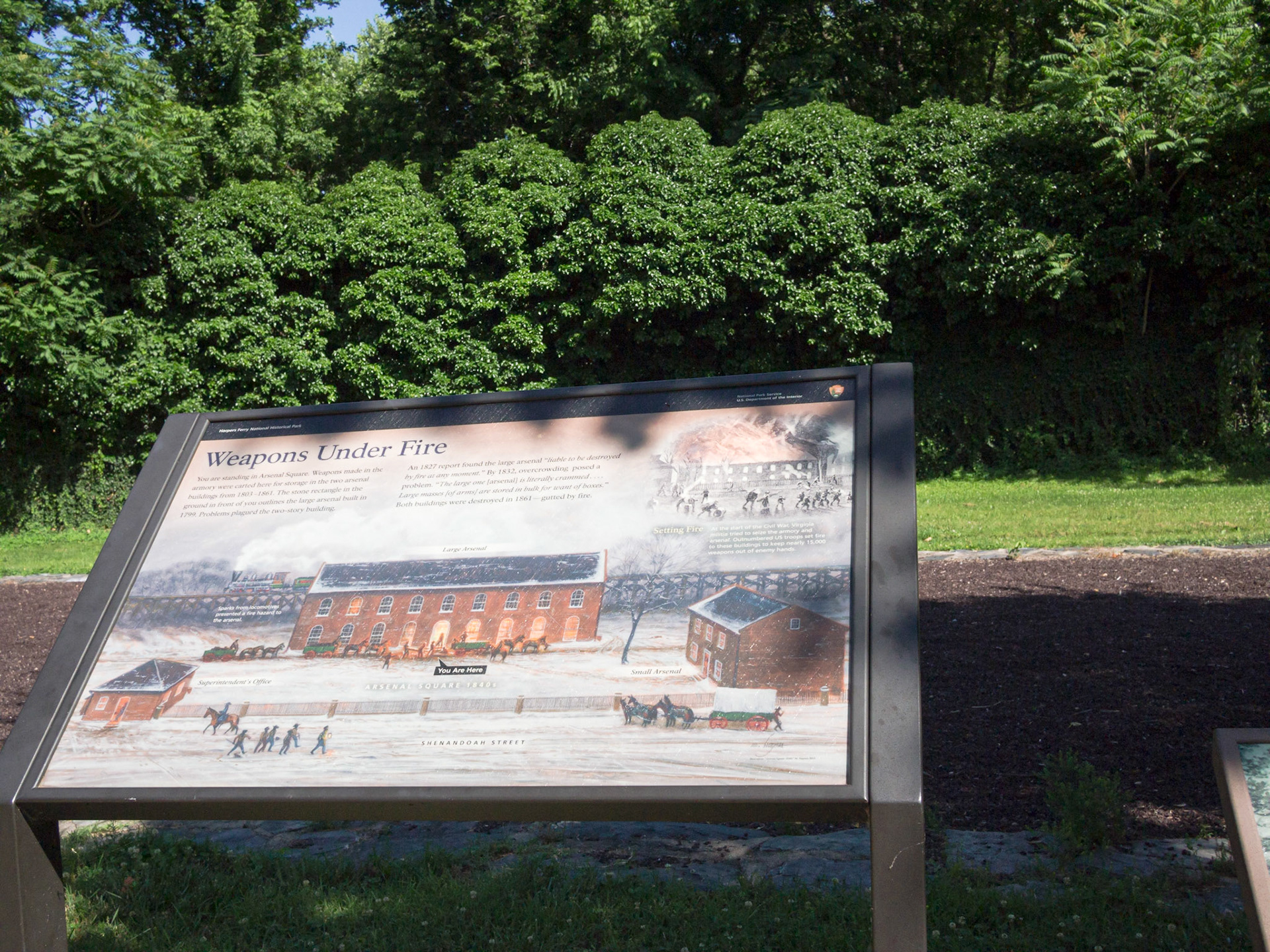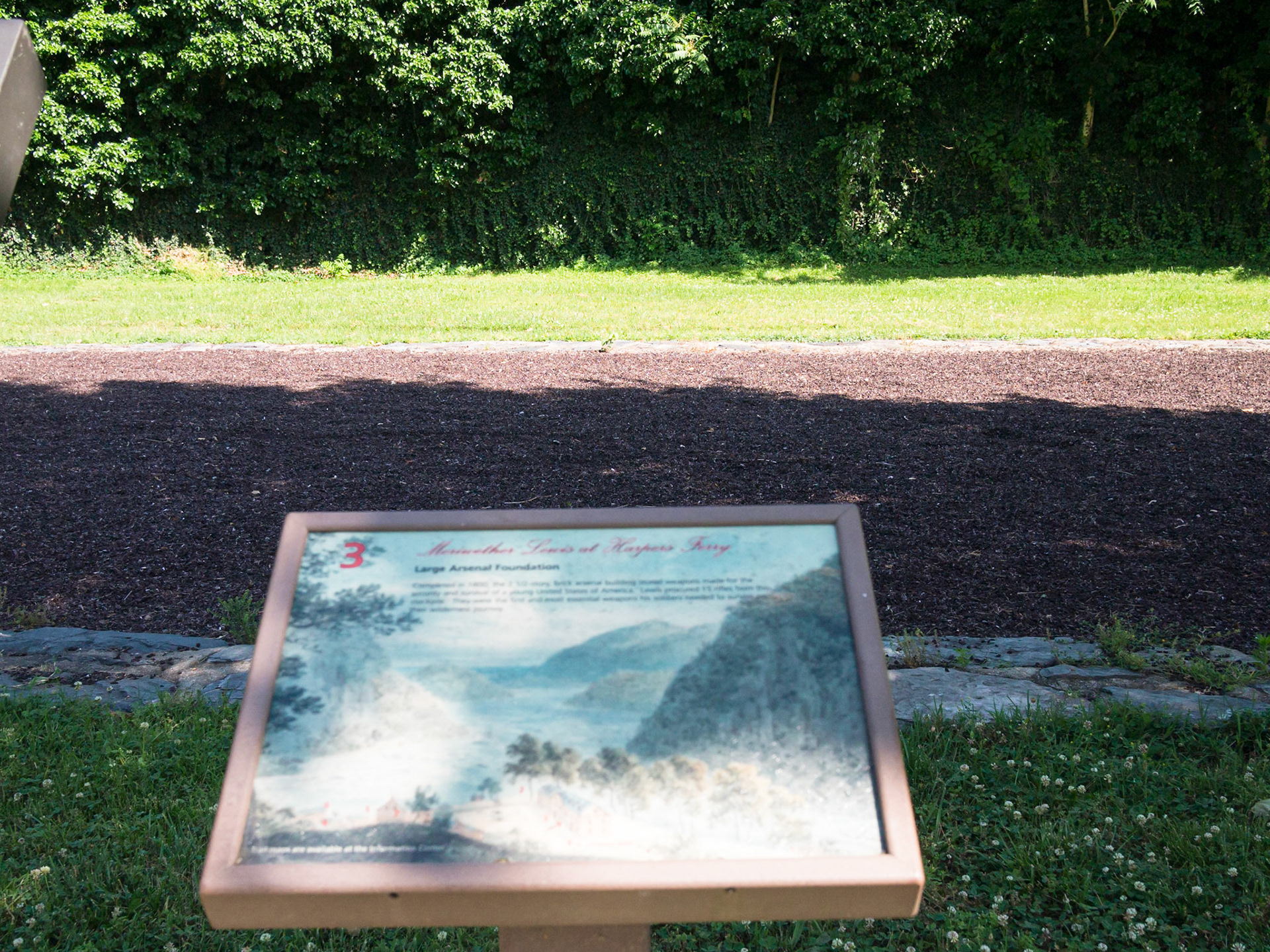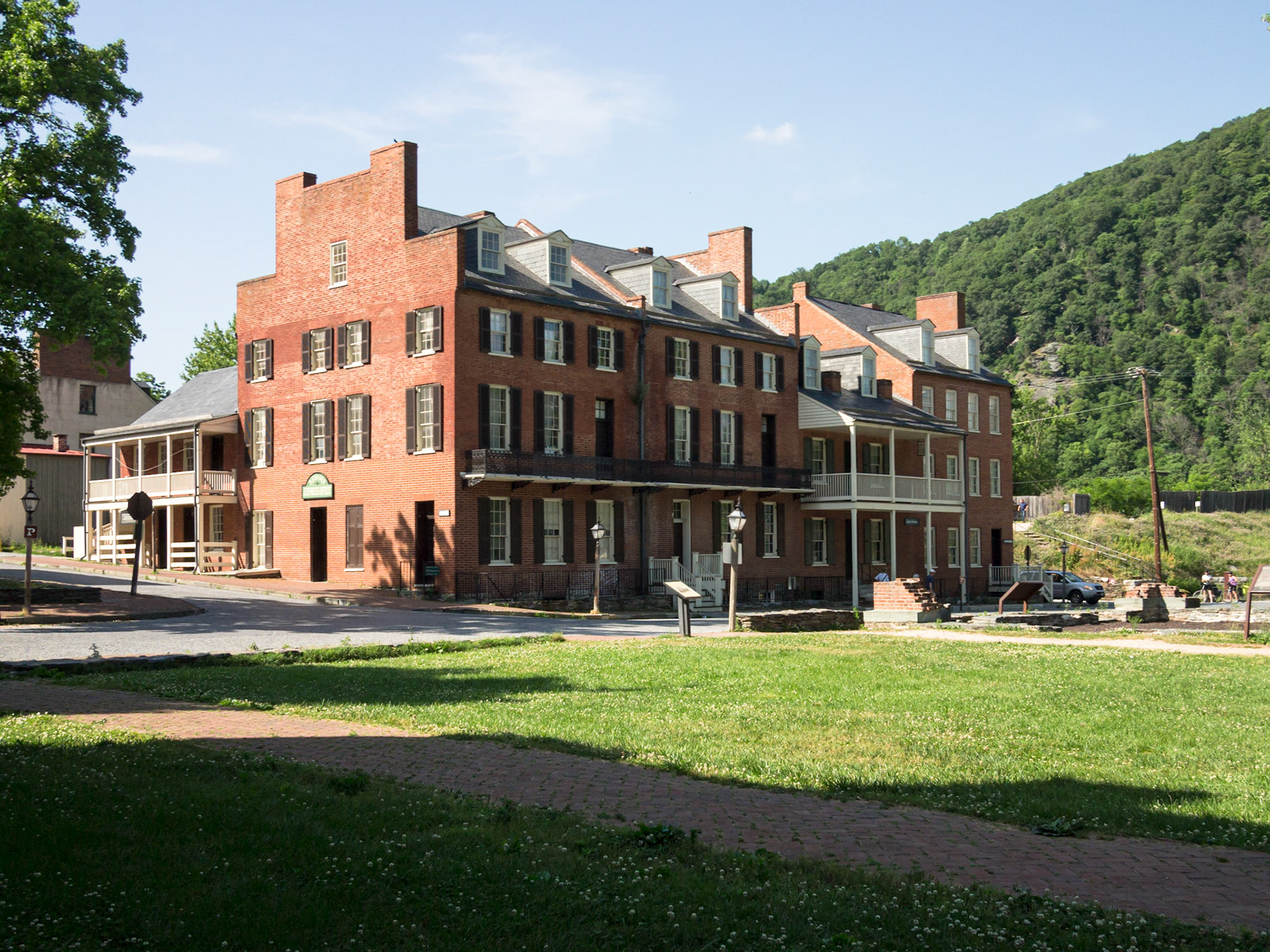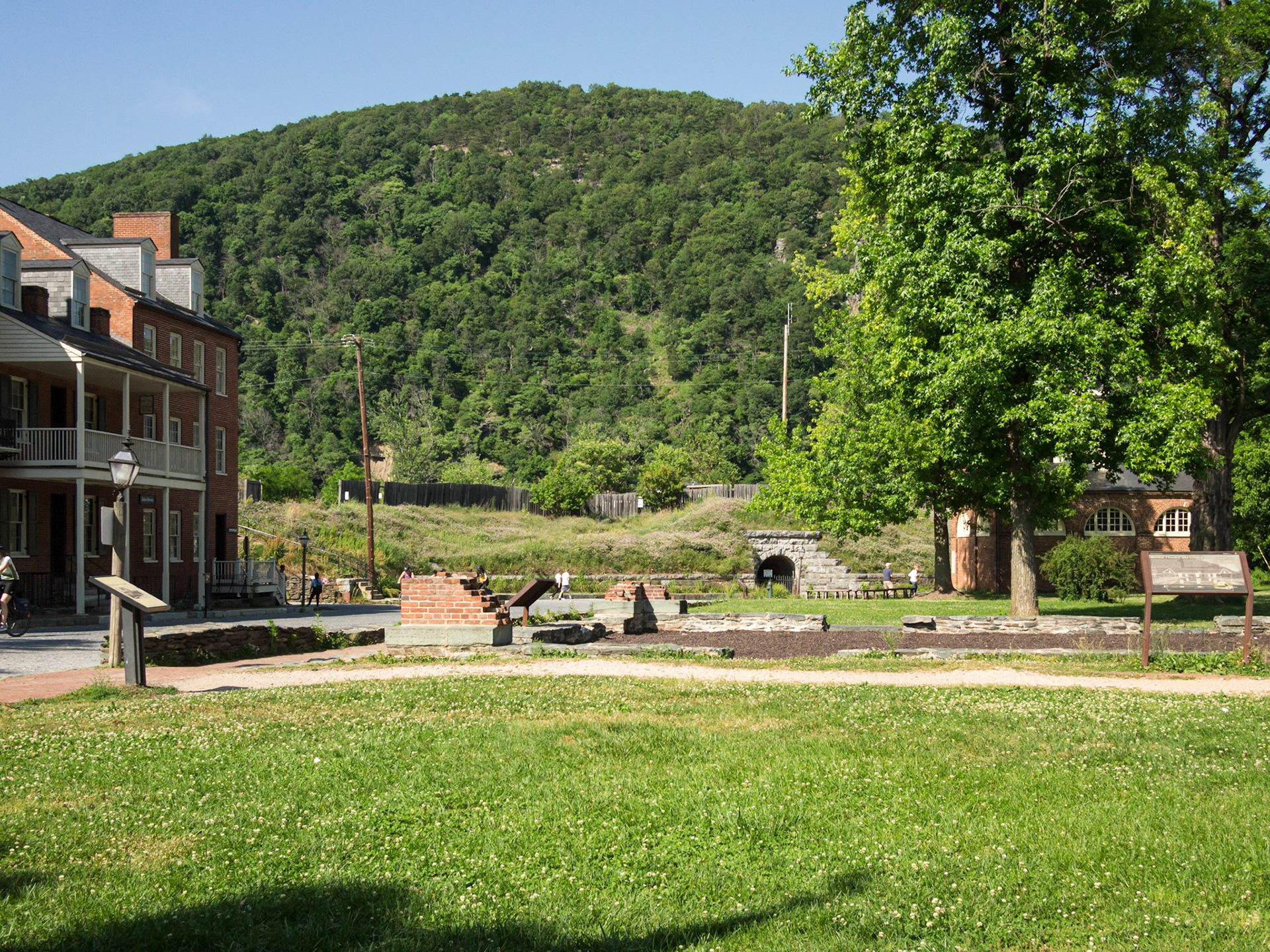
This was the site of the Armory, dating back to Washington’s day. The captured Union army set it afire, but the fire was extinguished, and the Confederacy moved the equipment south and then burned the Armory to the ground.

The RR (to DC) crosses the Potomac here then runs through a tunnel under Maryland Heights

The Harpers Ferry train station was built in the late 1800s (after the Civil War), is part of the National Park, and is an active commuter (MARC) and long distance (Amtrak) station.

Because it is in the National Park, this train station gets more love than your standard suburban rail station would.

Freight train rolling through the Harpers Ferry train station.

The town runs up a hill.

The Harpers Ferry train station was built in the late 1800s (after the Civil War), is part of the National Park, and is an active commuter (MARC) and long distance (Amtrak) station.

The town is on a steep slope.

This was the site of the Armory, dating back to Washington’s day. The captured Union army set it afire, but the fire was extinguished, and the Confederacy moved the equipment south and then burned the Armory to the ground.

After the Armory was destroyed in the Civil War, the B&O railroad built an embankment from the station to the point. They did not fill in the area of the Armory, though. It is unclear what they were up to, or why they constructed this embankment, since it doesn’t seem to do much of anything.

John Brown monument. It stands where the engine house stood at the time of Brown’s raid. (The house has been move a hundred feet to accommodate the railroad.)

After Jefferson commissioned him to map the Louisiana Purchase, Lewis went to Harpers Ferry to outfit the expedition.

After Jefferson commissioned him to map the Louisiana Purchase, Lewis went to Harpers Ferry to outfit the expedition.

Looking toward the point and Brown’s engine house

Street heading away from the point. The arsenal would have stood on the left.

This bridge carries the Winchester & Potomac RR over the Potomac. There is also a pedestrian walkway along the bridge carrying the Appalachian Trail. Piers of a previous bridge to the right.

Looking down the Potomac from the point. The piers of abandoned railroad bridge are visible in the foreground.

Potomac, from the point. Jefferson called it one of the most scenic views in the nation.

End of the Shenandoah Canal just before it enters the Potomac River at the Point of Harpers Ferry. The Shenandoah Canal was a short (one mile) canal that ran alongside the Shenandoah River just before it enters the Potomac River at Harpers Ferry.

The engine house where John Brown barricaded himself and his followers. The leftmost door is a storage area; Brown used the section with the two rightmost doors.

Inside of the engine house where John Brown was holed up with his followers.

Inside of the engine house where John Brown was holed up with his followers.

In the corner where the bricks are broken is where John Brown was captured

By the Arsenal

Site of the Arsenal, which stored weapons and in the Civil War was packed with weaponry. The Arsenal was a high risk structure due to the railroad trestle that ran (still runs) directly behind it. It was feared that sparks from a passing engine could blow it sky high. But it succumbed to flood waters, not fire.

Site of the Arsenal, which stored weapons and in the Civil War was packed with weaponry. The Arsenal was a high risk structure due to the railroad trestle that ran (still runs) directly behind it. It was feared that sparks from a passing engine could blow it sky high. But it succumbed to flood waters, not fire.

Site of the Arsenal, which stored weapons and in the Civil War was packed with weaponry. The Arsenal was a high risk structure due to the railroad trestle that ran (still runs) directly behind it. It was feared that sparks from a passing engine could blow it sky high. But it succumbed to flood waters, not fire.

Period buildings, facing the engine house

Shenandoah RR trestle

Looking across the Potomac to Maryland Heights, which was positioned to pound the town mercilessly

